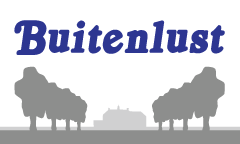Building the basis of Soest station
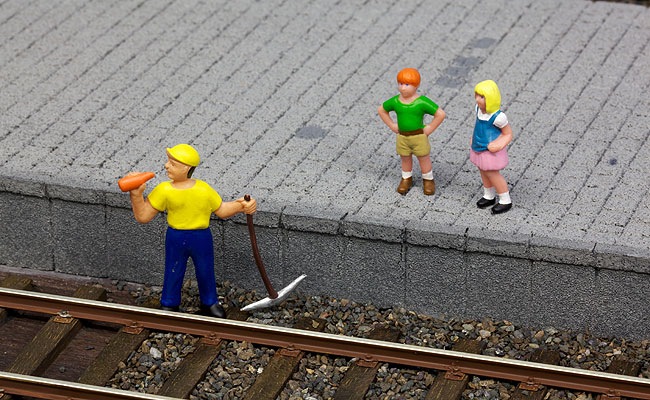
March 2011. Construction of Soest, the fifth part of Buitenlust, is moving ahead. The tracks have been laid and the basis of the platforms has been built. The centre platform has been made from blue foam (HD 300). This material gives a pretty accurate imitation of the course concrete of the real platform. The foam is also quite easy to work with. Many architects use it to create their models. You can buy the foam from shops that specialise in materials for architectural models.

The tracks have been hand-laid with parts from Hassler and Wenz. After connecting and testing, the tracks were ballasted. I use ballasting materials from Koemo. The station of Soest only has three points, of which one is a large curved point. The platform is relatively short, but in reality is is not long either. It can accommodate four to six carriages and that is about the maximum for Buitenlust anyway.
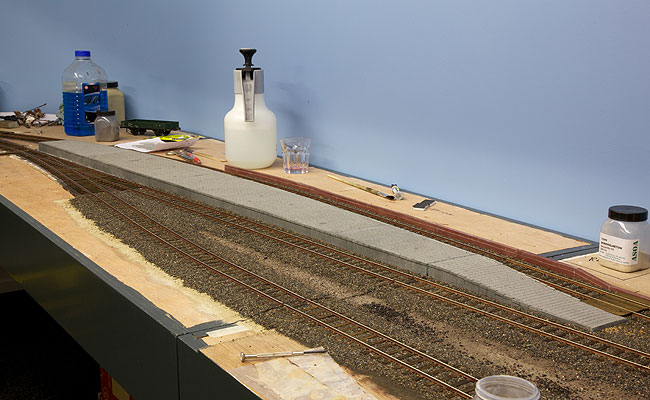
The platform had to be built before the tracks could be ballasted. So, the basis is done. It will be further detailed and weathered later, e.g. weeds that grow in the seems between the tiles. The platform will be outfitted with five lampposts, two benches and a concrete shelter. The other platform was made from resin castings. The side of the platform of Soest is identical to the one of Baarn NCS and Soestdijk station.

The tiles of the platform have been carved into the foam piece by piece. The platform has been painted with acrylic paint, sanded and washed with diluted black paint. The result resembles concrete remarkably well. The colour of the ballast still has be adjusted. The tracks will also be weathered with rust coloured and black paint.

The colours work well together. The platforms were built according to the official railway manual from the 1930’s. The height seems to be right in comparison to the (German) passenger cars.

There is still a lot to be done on Soest. The work will go on over the next few months, maybe even years. In the mean time I made Dutch clearance signals for the switches. Based on an initial set of six, I made moulds and cast several sets in resin. Sets can be ordered from the shop; just clean the edges, paint them and they are ready for use.
People on the platform
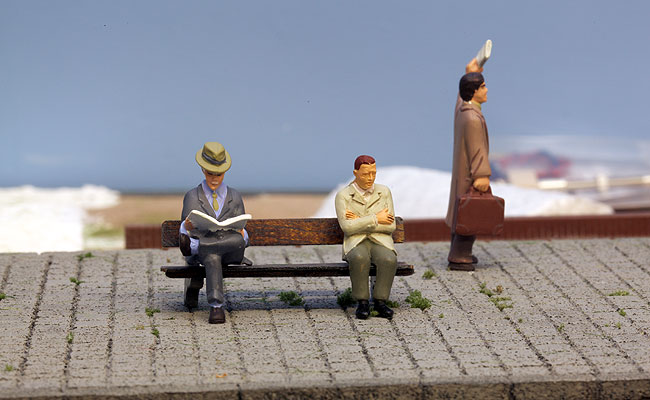
May 2011. It will be a while before the station building of Soest arrives on the scene, but the platform is already populated with travelers. The bench is an almost exact copy of the benches that used to be on the platform. The model is made by Paulo. The figurines are from Norev (left, background) and Preiser (to the right on the bench).

This shelter used to be on the platform of Soest. I reconstructed it from a few photos that barely showed the shelter. A fellow modeller was kind enough to measure a similar shelter for me on the other side of the country. The model was made from styrene and airbrushed with Tamiya paint.

Little greens are growing in the seems between the tiles on the platform. Most of them grow grow in places where few people walk, like at the far end of the platform. Grasses and little bushes grow between the tracks. A little further down the line is a potato field. All sorts of plants are growing along the edge.

The potato field is situated on the slope of the Soester Eng (the big hill Soest was built around) and is higher than the track. The plants were made with scenery materials from Silhouette. The little bushes and ground cover along the path were created by layering grass. Trees and higher bushes will be added along the track.

There are several barns and sheds in the gardens across the railway line. This barn has a foam board basis that was covered with thin strips of wood. The strips were cut from a sheet of 0.5 mm plywood with a Proxxon bench saw. The building has been painted, dry brushed and weathered with pastels.

The little green shed was built in the same way. The rabbit hotel, including straw and rabbit, is model from Paulo. You just can't build everything yourself.
Building bridges
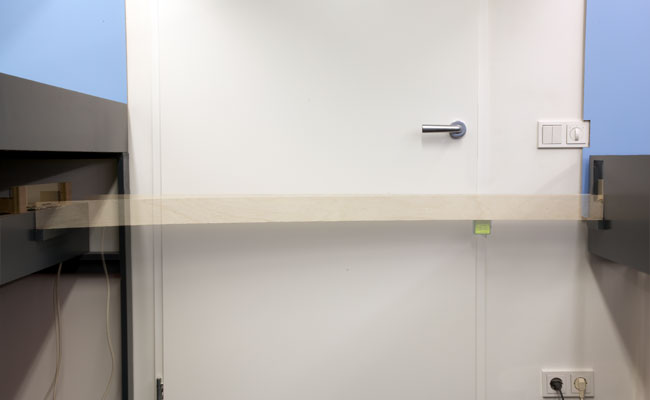
May and June 2011. Completing the basis for the last group of modules with the sanding pit heralds the next big step for Buitenlust. The modules are in the middle of the room and play a central role in the plan of Buitenlust. The tracks on the modules connect the upper level with the lower level. They also close the track loop at the lower level. This track crosses in front of the door on a removable section.

The removable section is supported by the modules on both sides. A 3 cm high guard prevents the models from tumbling down in case of a derailment. When the bridge is not in place, the tracks are blocked with wooden stops. Under the stops are copper contacts, connected through a resistor. When the stops are in place, the contacts hit the rails and a small current flows through the resistor. The stops provide an electrical as well as a mechanical safe-guard and signal the track is occupied.

The bridge is kept in place by two wooden pins. The pens fit exactly into two wholes in the bridgehead. Gently pressing the bridge down is enough to lock it into place. A little jolt is enough to loosen it again.

The modules of the sand pit split the room into two. There is a walkway on both sides of the modules. The first walkway leads from the door to the lemonade factory of Vrolic. The high modules are for Baarn NCS station with the staging yard below. The lower modules are the sand pit ones.

Along the other walkway are the modules of the station of Soest. It also provides a look at the sand pit form the opposite side. Over the modules is a suspended frame with tube lights. There are additional tube lights over the walkways to provide working lights. In total, there are about 750 Watts in tube lights in this room.

I made a start with the scenery on one end of Soest. The foreground features a field of potatoes and along the track are high trees (about 40 cm). The edges are covered with bushes, tall grasses and lots of other green stuff. Detailing the edges takes up a surprising amount of time.
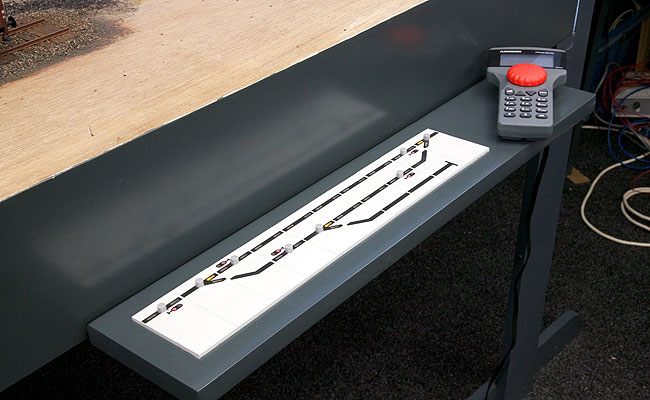
Another finished project: the switchboard for Soest. It started out as a little experiment with Uhlenbrock's Track-Control, but it is more fun than I thought it would be. I will probably make another one for the sand pit yard. I have included some extra space to put a LocoNet throttle, in this case a Profi-Boss from Fleischmann.
Building around the track
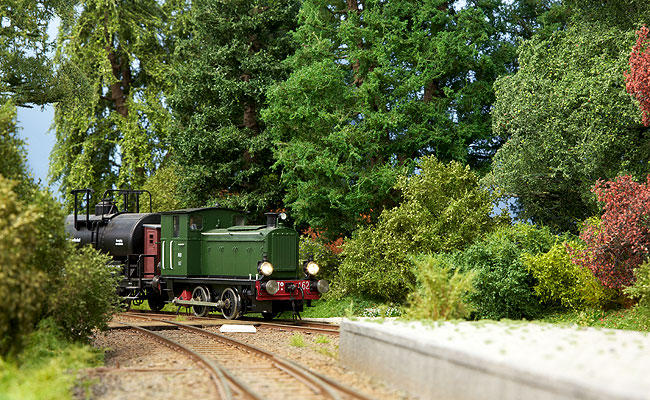
December 2011. The NS 162 enters the station of Soest. This little corner of Buitenlust is about finished. The high trees separate the railway line from the backyards of the houses. The tree line has been overgrown with bushes, grasses and lots of other green stuff. It sure starts looking like the real thing.

Over the last few weeks I spent a lot of time on building the sand pit yard. The yard has numerous switches, including a double diamond one. In O scale such a switch isover 75 cm in length. The switches are operated with the proven Tortoise switch machines. Quite a lot of force is required to throw the big O scale switches and the Tortoises can easily provide that. They are easy to mount and practically indestructible. The only disadvantage is their relative loud noise.

Several thousands of nails later - there are about 230 nails in a meter of track - the yard is completed. During trial runs, the switches are fine-tuned to make sure all rolling stock can pass over them without any problems. Especially the frogs of the Hassler double diamond required extensive polishing to make everything runs smoothly.

The scenery around Soest creates a few great photo opportunities. The bushes and trees in the foreground add depth to the image. Creating a building in O scale is a lot of work, but detailing the landscape is even more work. The vegetation along the track consists of a wide variety of materials, like Heki Flor, Noch grass fibers and Polak bushes. You can hardly have enough different materials to model nature's diversity. However... the overall impression must be homogenous.

The trees along the line were partly bought from Anita Decor. Others were made by Exclusiv Miniatur. The trees are between 35 and 50 cm in height and very detailed. In the background I have used cheaper trees from Heki, which I 'upgraded' with leaves. You hardly notice it and it saves some money.

A side project: laser cutting. The street is a thin sheet of MDF that I had cut and engraved at Easy Laser. You simply create the drawings in Adobe Illustrator, email them and a week or so later you will find a perfectly cut piece of road in the mail. I drew the road parts to seamlessly fit together. Stick them together and you get an endless stretch of road. Just paint it and you're done. The road is a try-out of bigger things to come. I am planning to use the same technique next year to create a set of unique buildings. Each yard has got his own layout plan, like the one for Baarn NCS you see here. It will be build into the control panel over the next few weeks.
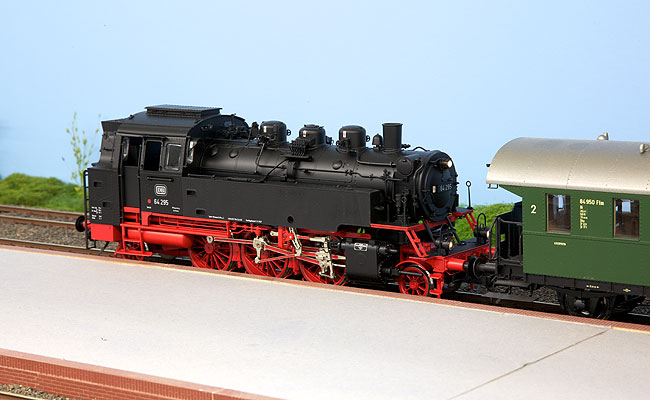
The BR 64 from Lenz does not fit my Dutch theme, but I couldn't resist buying one. The beautiful engine is greatly detailed and still very affordable. The locomotive moves perfectly and the sound is amazing. As we have gotten used to with Lenz, the couplers and numerous other functions can be digitally remote controlled.
2011
